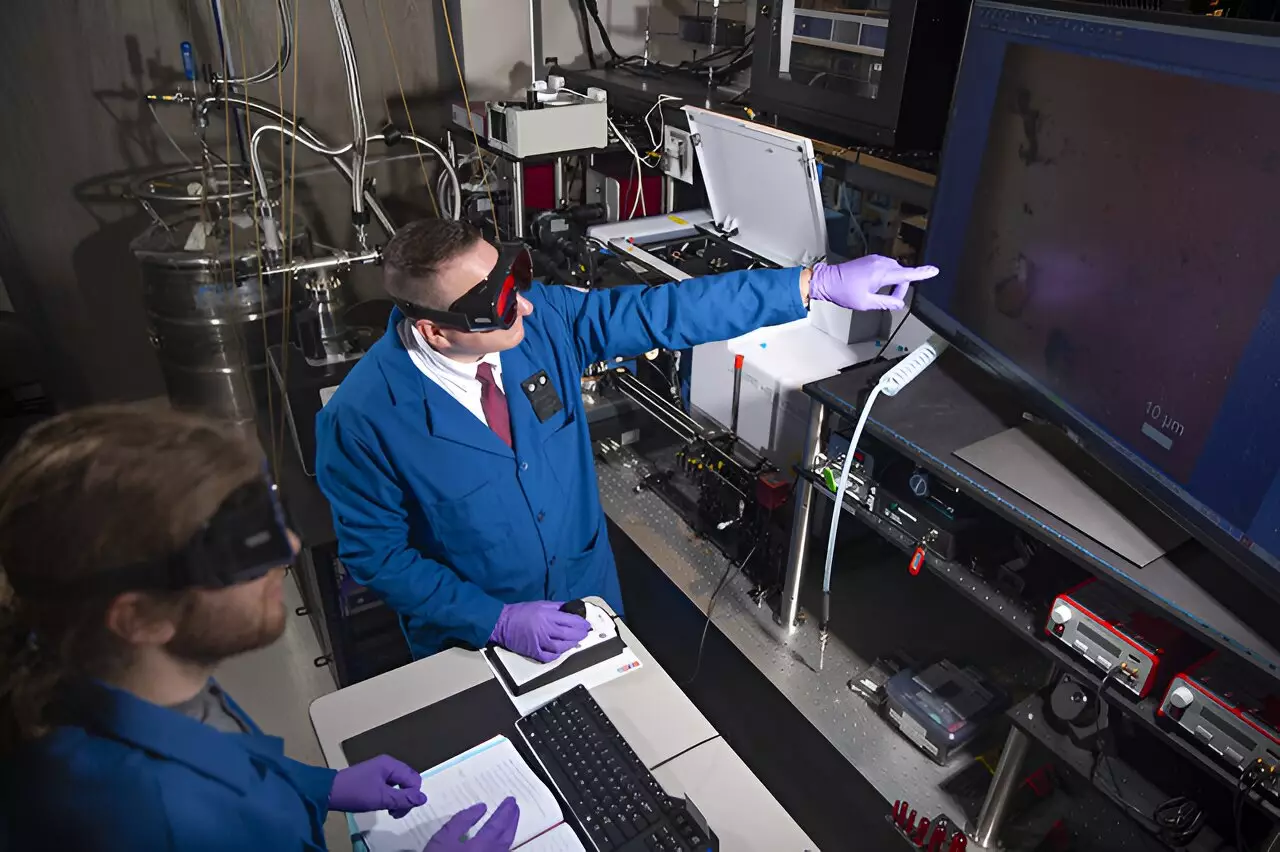In a recent study published in the journal Nature Communications, scientists from Los Alamos National Laboratory and the University of California, Irvine have made a significant breakthrough in the field of topological phases of matter. By using a novel strain engineering approach, they were able to convert the material hafnium pentatelluride (HfTe5) into a strong topological insulator phase. This discovery has the potential to drive advancements in quantum devices such as quantum optoelectronic devices, dark matter detectors, and quantum computers.
The research team at the University of California, Irvine, grew HfTe5 crystals and applied a strain engineering approach to the material. This approach involved subjecting the material to mechanical force at cryogenic temperatures. The team in Los Alamos then utilized optical spectroscopy to image the sample at a sub-micron level, followed by angle-resolved photoemission spectroscopy at the University of Tennessee to understand the effects of the strain engineering.
Through their experiments, the researchers discovered that the strain engineering changed the behavior of HfTe5, transforming it from a weak topological insulator to a strong topological insulator. The bulk electrical resistivity of the material increased by over three orders of magnitude, while its topological surface states became the dominant pathway for electronic transport. These properties make HfTe5 highly suitable for the development of quantum devices.
The successful conversion of HfTe5 into a strong topological insulator opens up possibilities for the development of various quantum devices. Quantum optoelectronic devices, which utilize the interactions between light and matter at the quantum level, could benefit from the unique properties of HfTe5. Additionally, HfTe5 shows promise in the field of dark matter detection, where its topological surface states could help detect elusive dark matter particles. Furthermore, the material’s potential for use in topologically protected devices, such as quantum computers, is highly encouraging.
The positive results obtained from the strain engineering approach used on HfTe5 also suggest the possibility of applying this methodology to other quantum materials. This opens up avenues for studying topological phase transitions in van der Waals materials and heterostructures. Van der Waals materials are lattice-like structures characterized by strong in-plane bonds and weak out-of-plane bonds among the atoms or molecules, akin to the pages of a book. By subjecting these materials to strain under high magnetic fields, researchers can explore the newly discovered topological properties and gain insights into exotic physics phenomena such as quantum anomalies.
Moving forward, new experiments are being conducted at the Los Alamos National High Magnetic Field Laboratory—Pulsed Field Facility. These experiments subject HfTe5 to strain under ultra-high magnetic fields of up to 65 Tesla. By studying the material’s behavior under these conditions, researchers hope to further uncover the potential of HfTe5 and its applications in quantum devices.
The recent breakthrough in the conversion of HfTe5 into a strong topological insulator using strain engineering represents an exciting development in the field of topological phases of matter. The unique properties exhibited by HfTe5 have the potential to revolutionize the design and functionality of quantum devices. Furthermore, the successful application of the strain engineering approach opens up new avenues for studying topological phase transitions in other quantum materials. Continued research in this area will undoubtedly contribute to advancements in our understanding of exotic physics phenomena and pave the way for the development of innovative quantum technologies.


Leave a Reply